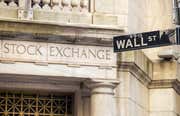|

|
Global and emerging market ETFs allow investors to diversify their investments away from the U.S. and profit from the growth of foreign economies. Among the attractive qualities of emerging markets economies are the growing working populations, increasing levels of consumption and relatively low debt levels.
Investors look to emerging markets for relatively high potential returns driven by the potentially high economic growth rates. However, emerging market investments also come with greater risks, such as potential political instability, currency exchange rate fluctuations and lower levels of liquidity. (For related reading, see: What is an Emerging Market Economy?)
Vanguard FTSE Emerging Markets ETF – VWO
The Vanguard FTSE Emerging Markets ETF (VWO) tracks the performance of the FTSE Emerging Markets All Cap China A Inclusion Index, a market-cap weighted benchmark that represents the performance of large-, mid- and small-cap stocks in 23 emerging markets, including countries in the Americas (Brazil, Chile, Colombia, Mexico and Pero); Europe, the Middle East and Africa (Czech Republic, Egypt, Greece, Hungary, Poland, Qatar, Russia, South Africa, Turkey and United Arab Emirates); and Asia (China, India, Indonesia, Malaysia, Pakistan, Philippines, Taiwan and Thailand).
Launched in 2005, VWO has total assets of $70.64 billion as of Feb. 22, 2018. While the fund is less liquid than EEM (another popular emerging market ETF, below), with an average daily volume of 11.8 million shares traded, it has a lower expense ratio of 0.14%. (See also: EEM vs. VWO.)
iShares MSCI Emerging Markets ETF – EEM
The iShares MSCI Emerging Markets ETF (EEM) tracks the MSCI Emerging Markets Index, which is designed to measure equity market performance in the global emerging markets. As of 2018, the Index covers 24 emerging economies – representing 10% of world market capitalization – including countries in the Americas (Brazil, Chile, Colombia, Mexico and Pero); Europe, the Middle East and Africa (Czech Republic, Egypt, Greece, Hungary, Poland, Qatar, Russia, South Africa, Turkey and United Arab Emirates); and Asia (China, India, Indonesia, Korea, Malaysia, Pakistan, Philippines, Taiwan and Thailand).
EEM is one of the most actively traded ETFs in the world, with an average daily volume of over 55 million shares traded. Launched in 2003, it has $43.72 billion in total assets as of Feb. 22, 2018. The fund is managed by BlackRock and has an expense ratio of 0.69%.
iShares MSCI EAFE ETF – EFA
Focused on developed economies (excluding the U.S. and Canada), iShares MSCI EAFE (EFA) is another massive global ETF. It tracks the MSCI EAFE Index, which covers large- and mid-cap stocks based in 21 developed markets in Europe and the Middle East (Austria, Belgium, Denmark, Finland, France, Germany, Ireland, Israel, Italy, Netherlands, Norway, Portugal, Spain, Sweden, Switzerland and the United Kingdom) and the Pacific (Australia, Hong Kong, Japan, New Zealand and Singapore). The top geographic exposure is in Japan (24.31% of market value), the U.K. (17.06%) and France (10.76%).
Launched in 2001, EFA has total net assets of $80.08 billion as of Feb. 22, 2018. The fund has an average daily trading volume of about 20 million shares and an expense ratio of 0.32%. (For more, see: EFA: iShares MSCI EAFE Index ETF.)
Top ETFs and What They Track: Stock Index ETFs
-
 Investing
InvestingThe 5 Largest Total Market ETFs (EFA, VTI)
Learn about the five largest total market ETFs by assets under management. Explore the tracking indexes, yields, expense ratios and trading volume for each ETF. -
 Investing
InvestingTop 5 Emerging Market ETFs (EEM, GMM)
Find out which emerging markets ETFs have enough of an asset base, trading volume and low fees to be considered top choices in the segment. -
 Investing
InvestingDifferent Ways to Think About the MSCI EAFE Index
Investors seeking more effective EAFE exposure can consider these funds. -
 Financial Advisor
Financial AdvisorHow to Play Emerging Markets Rebound with ETFs
Emerging markets are on the rebound, but not everyone is a believer. Here's how to play it either way with ETFs. -
 Investing
InvestingEFA: iShares MSCI EAFE Index ETF
Discover how the iShares MSCI EAFE Index ETF is managed, and learn which investors may benefit from adding the fund to a portfolio. -
 Investing
InvestingSmooth Sailing Seen for Emerging Markets ETFs
Volatility is usually common with emerging markets ETFs, but that is changing. -
 Investing
InvestingETF Flows: Emerging Market Equity ETFs Shedding Assets (EEM, VWO)
Discover five exchange-traded funds that invest in emerging market equities and experienced large year-to-date capital outflows as of March 4, 2016. -
 Investing
InvestingTime to Add Emerging Markets to Your Portfolio?
Now that emerging markets are out of favor, is it time to add them to your portfolio? -
 Investing
InvestingETF Flows: Emerging Markets Equity ETFs Winning Assets (EEM, IEMG)
Learn about five exchange-traded funds that invest in emerging market equities and experienced large year-to-date capital inflows as of March 4, 2016. -
 Investing
InvestingInvest In Emerging Market Bonds With These ETFs
With the variety of emerging market bond ETFs now on the books, it's become far easier for investors to diversify. Here's a look at a few options.


